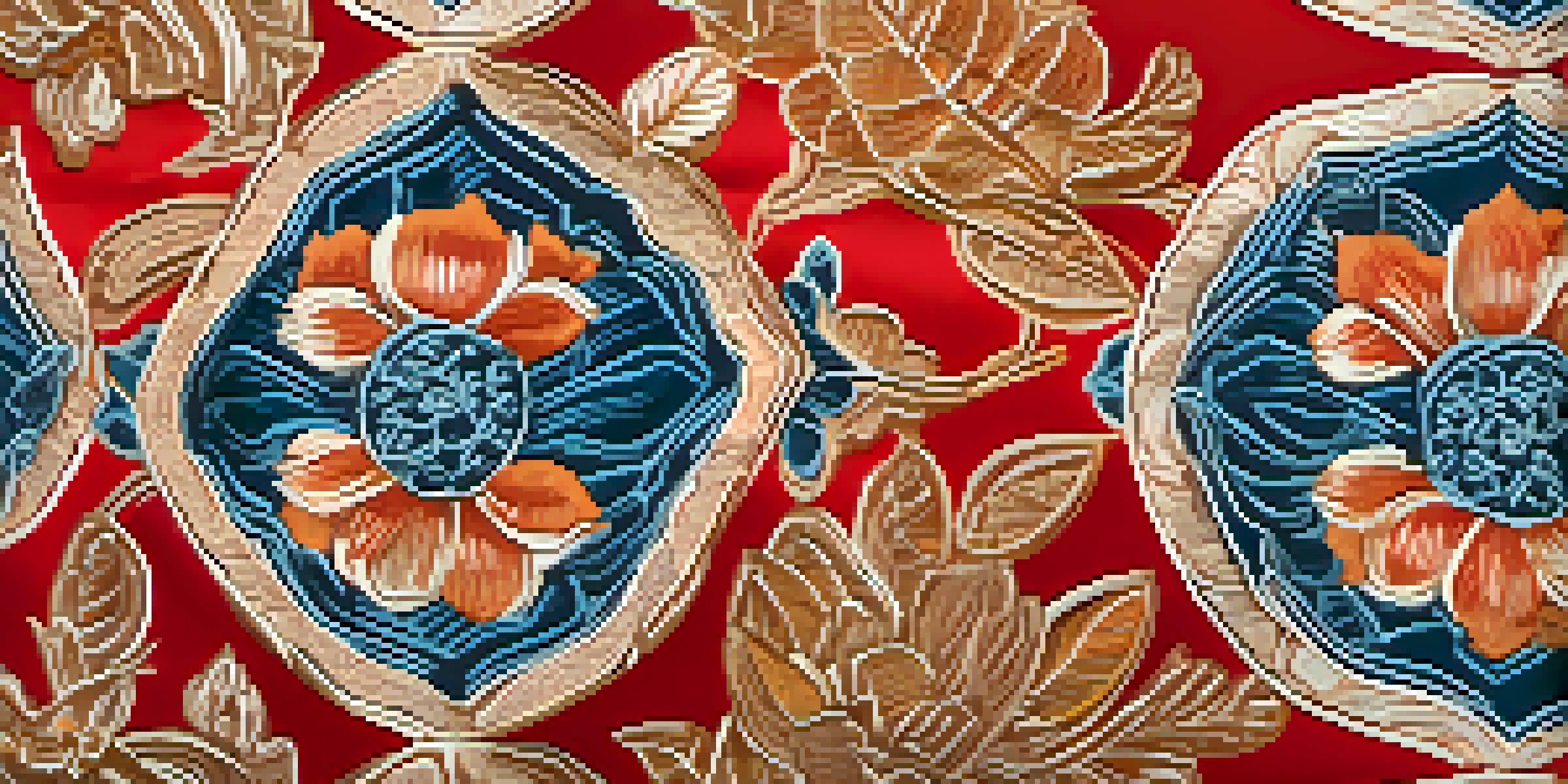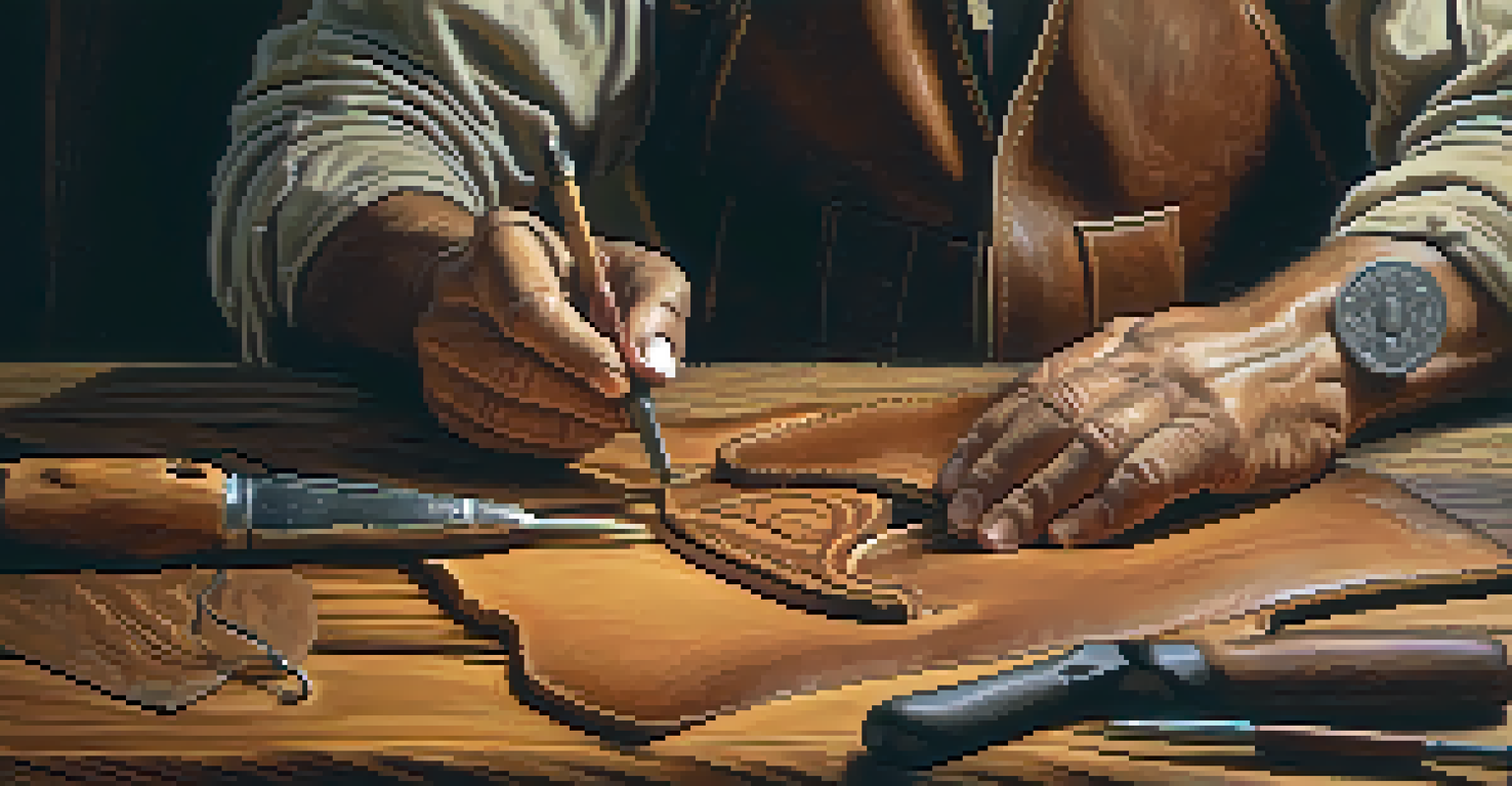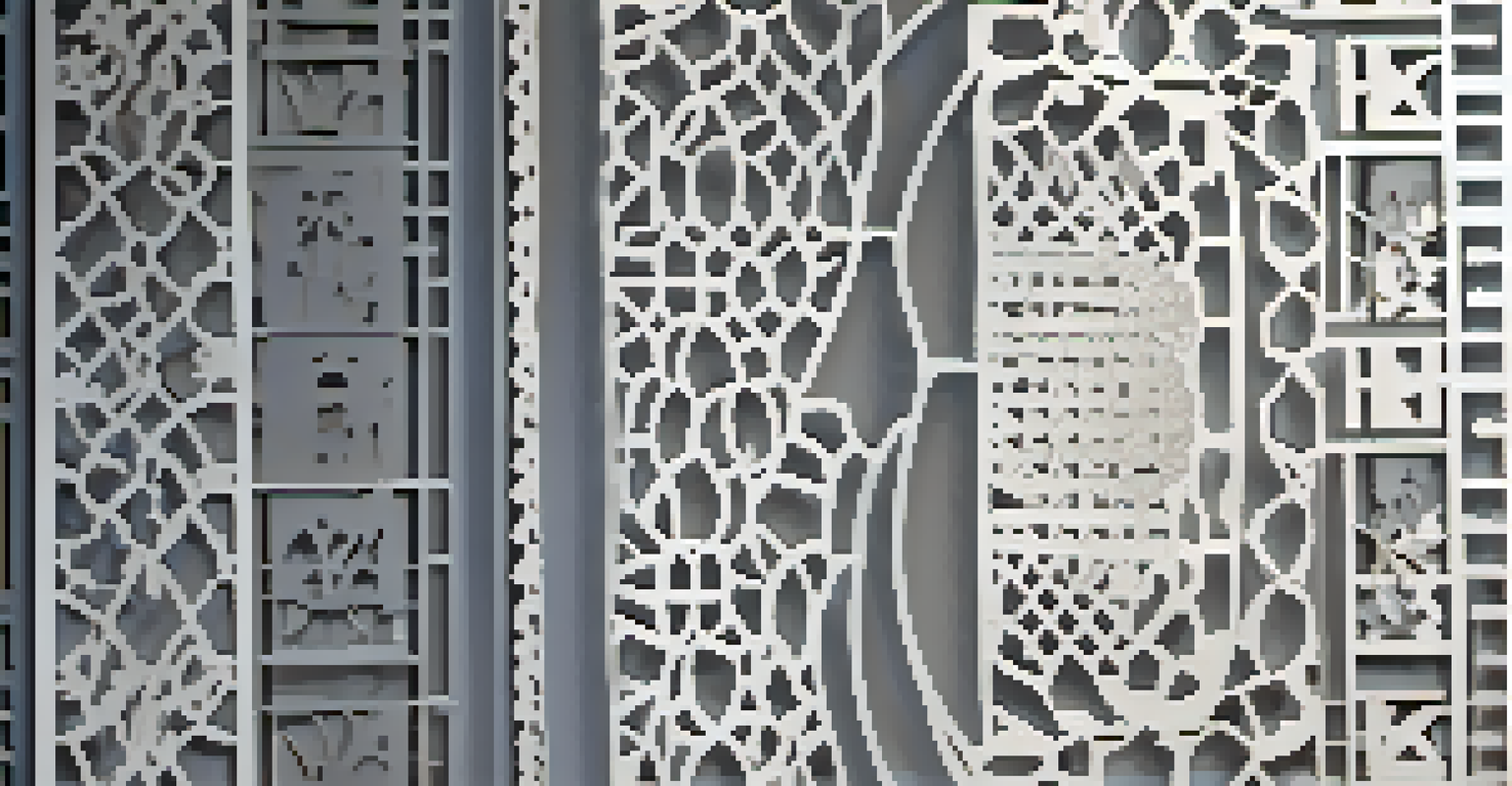Carving in Fashion: Techniques from Around the World

The Art of Carving: A Historical Perspective
Carving has a rich history in various cultures, serving as a form of artistic expression. From ancient textiles to contemporary fashion pieces, the techniques have evolved yet remained deeply rooted in tradition. Each culture brings its own unique flair, reflecting its values, beliefs, and aesthetics through carved designs.
Art is not what you see, but what you make others see.
For instance, the intricate woodblock printing from India showcases how carving techniques have influenced fabric patterns for centuries. These methods not only enhance the visual appeal of garments but also tell a story of cultural heritage. As we delve deeper into the world of fashion carving, we uncover a tapestry of creativity woven through time.
Today, as we embrace sustainability and craftsmanship, the revival of traditional carving techniques in fashion is witnessing a renaissance. Designers are increasingly looking to the past for inspiration, blending age-old methods with modern sensibilities to create unique pieces that resonate with consumers.
Woodblock Printing: A Timeless Technique
Woodblock printing is one of the oldest and most revered carving techniques that has shaped fashion across the globe. Originating in China, this method involves carving intricate designs into wooden blocks, which are then inked and pressed onto fabric. The result is a striking pattern that carries a sense of authenticity and craftsmanship.

Countries like India and Japan have adopted and adapted this technique, leading to distinctive styles such as Indian block prints and Japanese ukiyo-e textiles. Each region's interpretation of woodblock printing reflects local themes, flora, and fauna, making it a vibrant part of their cultural identity. This technique not only imbues garments with artistry but also connects wearers to a rich historical narrative.
Carving Reflects Cultural Heritage
Various carving techniques in fashion showcase unique cultural identities and stories through artistic expression.
In modern fashion, woodblock printing is experiencing a revival, as designers seek to merge traditional methods with contemporary designs. The eco-friendly aspect of this technique, using natural dyes and materials, makes it appealing to today's conscious consumers who value sustainability alongside style.
Carved Leather: Craftsmanship and Style
Carved leather is another fascinating technique that showcases the artistry behind fashion. This method involves etching or stamping designs onto leather to create intricate textures and patterns. Traditionally used in accessories like belts and bags, carved leather adds a touch of sophistication and uniqueness to any outfit.
Fashion is the armor to survive the reality of everyday life.
Countries such as Mexico are renowned for their elaborate leatherwork, often featuring motifs that reflect their rich cultural heritage. The craftsmanship involved in carving leather requires skill and precision, transforming a simple material into a work of art. Each piece tells a story, making carved leather not just an accessory, but a statement of identity.
As the fashion industry leans towards individuality, carved leather items are becoming more sought after. Consumers appreciate the blend of artistry and functionality, leading to a growing market for bespoke leather goods that celebrate craftsmanship and personal expression.
Cultural Influences: Carving Across Continents
Carving techniques vary greatly across different cultures, each bringing its own unique touch to fashion. For example, African cultures often use carving in beadwork and textiles, creating bold and vibrant designs that carry deep meanings. These cultural influences not only enrich fashion but also promote cross-cultural appreciation and understanding.
In contrast, Scandinavian fashion emphasizes minimalism, with wood carving techniques often used in accessories that reflect nature and simplicity. This divergence in styles illustrates how geographical and cultural contexts shape the carving techniques employed in fashion, making each piece a reflection of its origins.
Sustainability in Carving Practices
Modern fashion is embracing sustainable carving methods, utilizing eco-friendly materials and traditional techniques to resonate with conscious consumers.
As global fashion continues to evolve, the blending of these diverse carving techniques creates exciting new trends. Designers are increasingly inspired by global motifs, leading to a more inclusive approach to fashion that celebrates diversity while fostering creativity.
Sustainable Carving Practices in Fashion
Sustainability is at the forefront of today's fashion industry, and carving techniques are no exception. Many designers are now focusing on eco-friendly materials and processes, ensuring that their practices are kind to the planet. By using sustainably sourced wood or leather, they not only create beautiful pieces but also contribute to environmental conservation.
Carving techniques like hand-carving and block printing typically require less energy compared to mass-production methods, making them more sustainable options. This shift towards responsible craftsmanship resonates with consumers who are increasingly aware of their environmental impact and are seeking out brands that align with their values.
As the fashion landscape continues to embrace sustainability, carved fashion pieces are not just a trend but a movement. This allows consumers to wear their values with pride while supporting artisans and traditional methods that honor both culture and the environment.
Innovative Uses of Carving in Modern Fashion
Modern fashion is continually evolving, and carving techniques are being reimagined in innovative ways. Designers are experimenting with laser-cut technology to create intricate patterns that were once only achievable by hand. This blend of tradition and technology opens up new avenues for creativity, allowing for more complex and detailed designs.
For instance, the use of 3D printing in fashion is gaining popularity, enabling designers to carve and construct garments in ways that push the boundaries of traditional fashion design. This merging of cutting-edge technology with historical techniques highlights how carving is adapting to the needs and desires of the contemporary consumer.
Innovation Merges with Tradition
The evolution of carving in fashion is marked by the integration of new technologies, allowing for intricate designs while preserving historical artistry.
As fashion embraces innovation, carved designs are becoming more accessible and varied. This evolution not only retains the artistry of traditional carving but also caters to a modern audience that values both creativity and functionality.
The Future of Carving in Fashion: A Blend of Tradition and Innovation
Looking ahead, the future of carving in fashion appears bright as the industry continues to blend tradition with innovation. As consumers become more conscious of their choices, the demand for unique, handcrafted pieces will likely grow. Carving techniques, with their rich histories and cultural significance, will play a crucial role in meeting this demand.
Designers are increasingly recognizing the importance of storytelling in fashion, and carving offers a powerful medium to convey narratives. Whether it's through traditional woodblock prints or modern laser-cut designs, each piece can evoke emotions and connections to culture, history, and identity.

Ultimately, carving in fashion stands at the intersection of creativity, sustainability, and cultural appreciation. As we embrace these values, the techniques that have shaped fashion for centuries will continue to evolve, ensuring their relevance in a rapidly changing world.